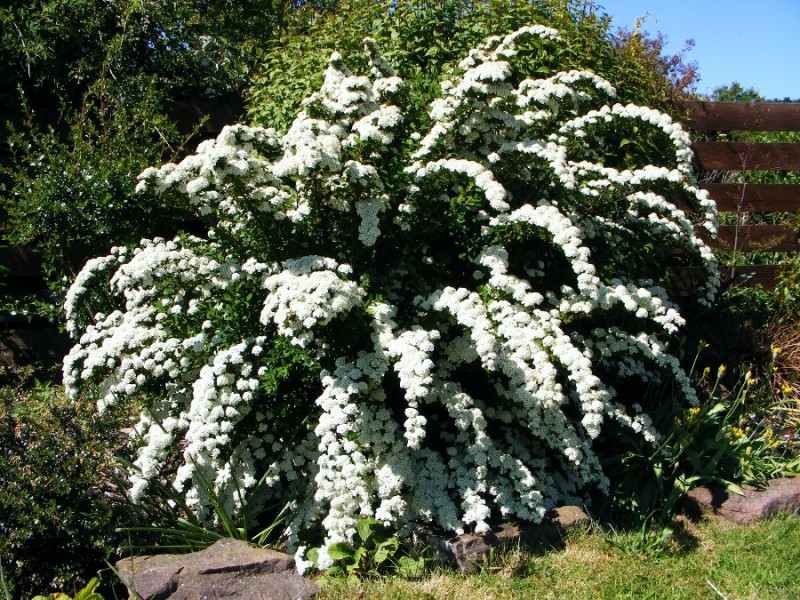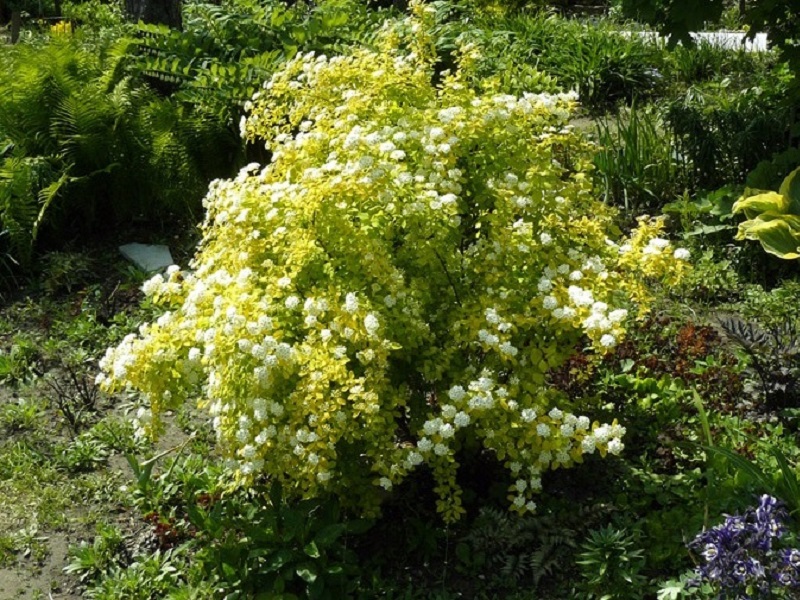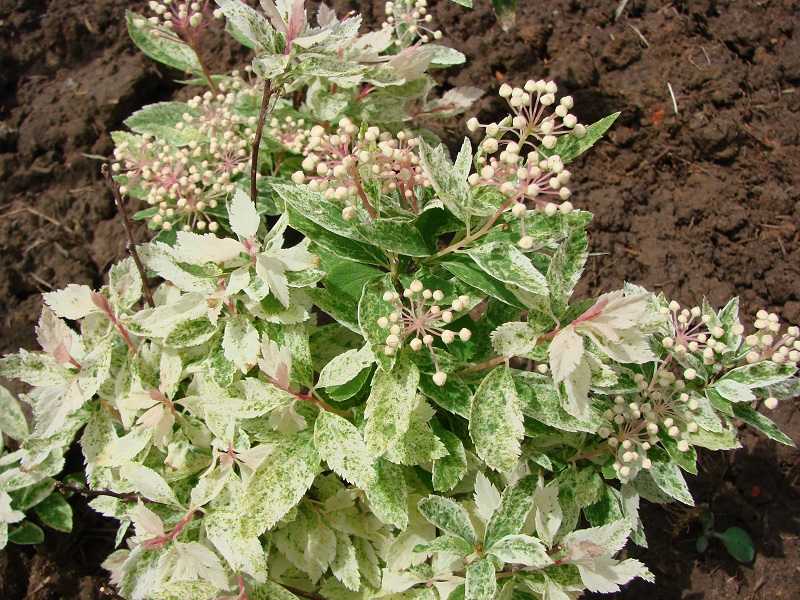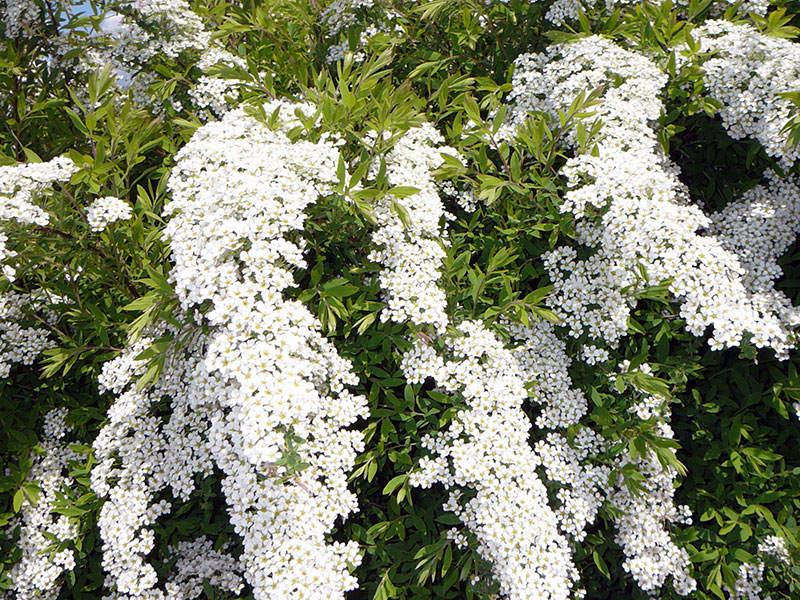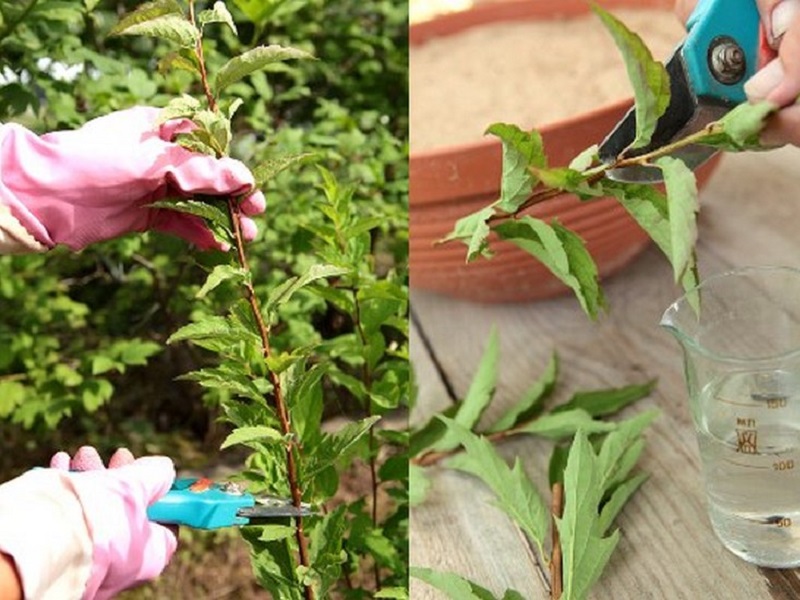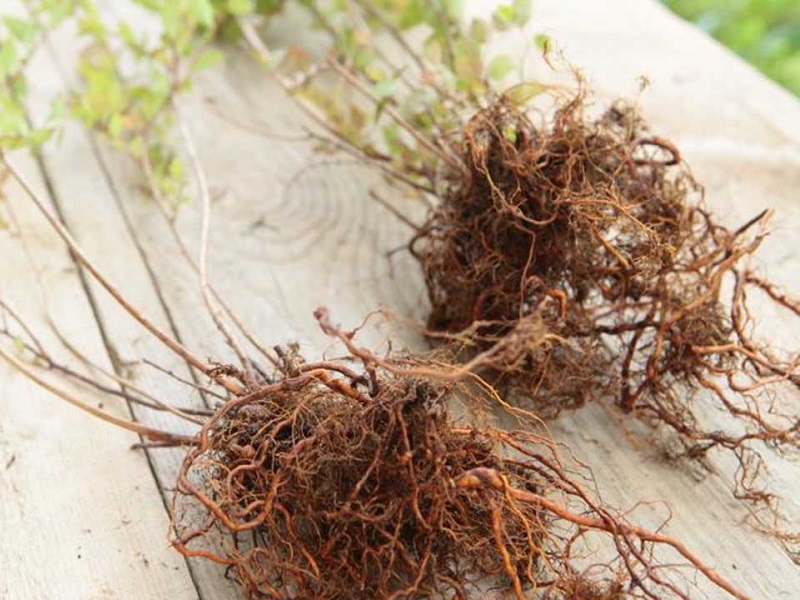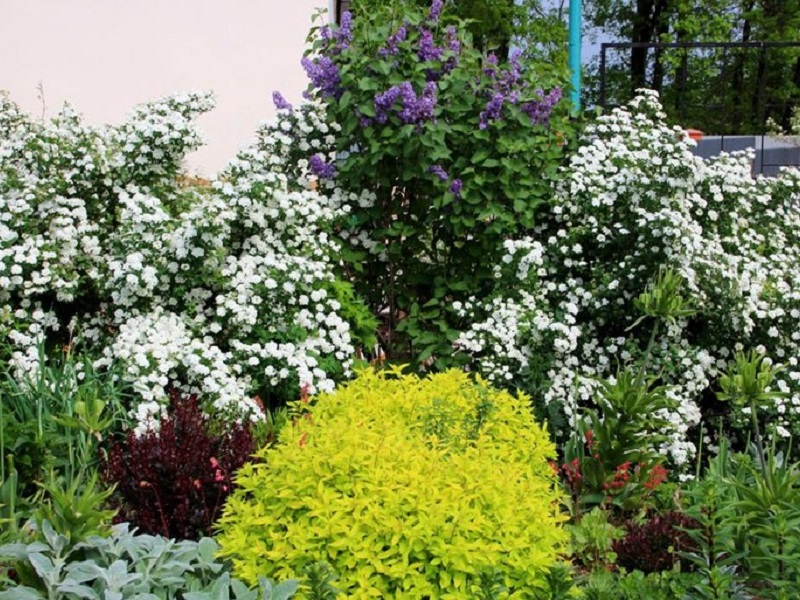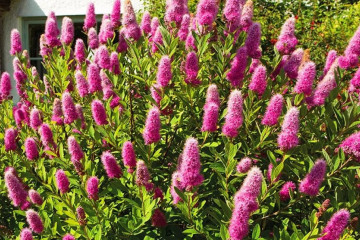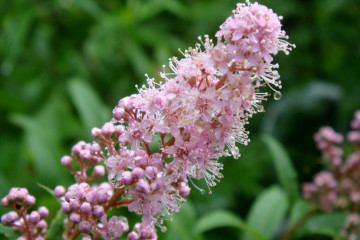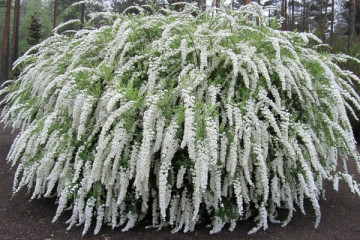Spirea Wangutta - botanical description and varieties
Content:
The mesmerizing lush bloom of the snow-white Wangutta spirea attracts the attention of all gardeners. Due to her biological characteristics, she won the love of breeders, landscape designers and summer residents.
Description of spirea Wangutta
When crossing the Cantonese spirea and the three-bladed spirea, Wangutta was bred by French breeders. The bushes reach 2 m in height and form a compact spherical shape. The plant is decorated with obovate foliage with jagged edges 3.5 cm in length. According to the description, the top of the leaf plate has a dark green color, and from the inside it is dull green.
Among the popular types and varieties of Wangutta spirea are:
- Spirea Gold Fontaine. The shrub has spreading branches covered with yellow-green foliage. With the onset of autumn, the deciduous cover acquires a yellow tint, and the area becomes colorful. In May, the gold bush is covered with corymbose white inflorescences that delight connoisseurs of the beauty of the Japanese garden. The variety is unpretentious to soil, frost-resistant. Fountain is not yet well known among gardeners. Belongs to a slow growing plant.
- Spirea Golden Fountain. A fast-growing, upright crop that grows up to 4 m in height. The plant is decorated with dark green foliage.
- Spirea Wangutta White Bride. A popular ornamental shrub prized for its white flowers. Its maximum height does not exceed 2 m. The variety is undemanding to the ground, it tolerates drought well.
- Spirea Pink Ice. An unpretentious and drought-resistant hybrid that forms a rounded crown, which at the time of flowering is covered with pale pink inflorescences. The uniqueness of the plant is added by the naturally mosaic color of the foliage. The bush is particularly decorative, lends itself well to haircuts.
- Spirea Dzhangu. A beautiful upright shrub, reaching a height of no more than 3 m.
Spiraea Vanhouttei is a group of varieties, each of which is distinguished by its special characteristics, peculiarities of cultivation.
Planting a plant
Many gardeners not only buy seedlings from nurseries such as Rusroz, but also try to grow crops on their own using seeds.
Planting from seeds
For sowing seeds, you need to take a wide and low container, which should be filled with a mixture of peat and leafy soil. Seeds are spread over the surface and covered with a thin layer of nutritious soil. The first seedlings will appear on the 8-10th day.
Planting seedlings in open ground
After 60-90 days, young bushes can be transferred to a garden bed in open ground.
Stages of the planting process:
- It is necessary to make the pits so that the root system is freely placed in the planting recess without bends and creases of the roots.
- Drainage is poured at the bottom of the holes about 20 cm thick.
- The seedling is lowered into the pit, the roots are straightened, and they are covered with a soil mixture made from turf, peat, humus and sand.
- They compact the earth well and carry out abundant watering.
- As the moisture is absorbed, mulch with peat.
Bushes obtained from seeds begin to bloom in 3-4 years of cultivation.
How to care for Wangutta spirea
In order for the Wangutta spirea (Spiraea Vanhouttei) to delight with its luxurious flowering for a long time, it is necessary to provide it with proper care, which includes the following activities:
Watering
The root system of the plant is located near the surface of the soil, so the culture does not tolerate drought well. It is important to carry out moderate watering, the frequency of which should be determined by weather factors, soil type and age of the ornamental shrub. It is not worth moisturizing it in broad daylight; it is better to choose the evening and morning time for this.
Top dressing
To obtain luxurious specimens with a lush blooming crown, the spirea should be provided in the right amount with the necessary nutrients. The culture is unpretentious, which is why it is enough to feed it once in the spring, using a universal mineral complex.
Pruning
When growing a spirea, it is important to form a crown in a timely manner. This procedure is carried out immediately after flowering: this will give the shrub a beautiful shape. Sanitary pruning is also necessary, in which damaged, dried, diseased stems, as well as shoots older than 3-4 years old, should be removed. Two-year-old branches should be cut in half.
Reproduction methods
There are two ways to propagate a crop:
- Sowing with seeds. The seed does not need to be germinated before planting. It should be planted dry in fertile soil. Care involves only moderate watering. When shoots appear and shoots reach 10 cm in height, you need to pick. Planting in a permanent place is recommended next spring.
- Cutting by stem processes. Strong, strong shoots are selected, which are cut from the plant 2 weeks after flowering. Semi-lignified cuttings are planted in containers with nutrient soil containing peat and sand in equal parts. Germinate planting material in a greenhouse. Care is to ensure a high level of humidity. In the spring of next year, young plants can be planted in a flower bed.
Reproduction can be carried out by dividing the main bush during transplantation. To do this, you need to dig out a strong specimen and divide it into several parts, being careful not to damage the root system. Each division must have strong and healthy shoots that can take root, grow and develop normally.
Transfer
It is better to replant an ornamental plant such as Spiraea Vanhouttei in the fall, choosing cloudy weather for this event. In this case, it is important to observe the following procedure:
- It is necessary to dig out the bush, having previously removed the old branches.
- Next, you should dig a hole of a suitable size.
- Then you need to place a bush in it, sprinkle with soil and water.
If all these steps are followed, the culture will normally survive the transplant.
Diseases and pests
Spirea Wangutta demonstrates resistance to diseases and pests. But poor care can trigger fungal infections. Their presence is evidenced by gray and black spots on the leaves, wilting of branches, young growing shoots, darkening of the bark. At the first sign, you need to quickly cut off the infected areas and process the sections using a garden pitch. In case of severe manifestations of disease, systemic fungicides should be used.
Culture and such harmful insects as spider mites and aphids do not bypass the culture. Insecticides will help in the fight against them.
Flowering period
The flowering process occurs in mid-June and lasts 2-3 weeks until early July. Under favorable conditions, a second blooming of white inflorescences in August is possible, but it will not be as abundant as the first. The fruits ripen by October.
Preparing for winter
An important feature of an ornamental shrub is frost resistance. It is necessary to cover plants only in regions with severe winters, where frosts drop below -35 ... -40 ° C. For these purposes, you can use dry leaves, spruce branches.
Use in landscape design
Spirea Wangutta allows you to refine the site, make a strict accent in the design of the local area and harmoniously combine all types of crops growing on it, since it looks perfect both in group and single plantings. The plant is used for framing paths, suitable for planting near pools, fountains, as well as in complex compositions. Fir-trees, thujas, junipers, and scumpies can accompany him.
If the priority for the grower is frost resistance, unpretentiousness in care, then such a promising option as Spiraea Vanhouttei can be considered. In addition, the culture will bring brightness to any compositional solution, and will delight you with magnificent flowering.
